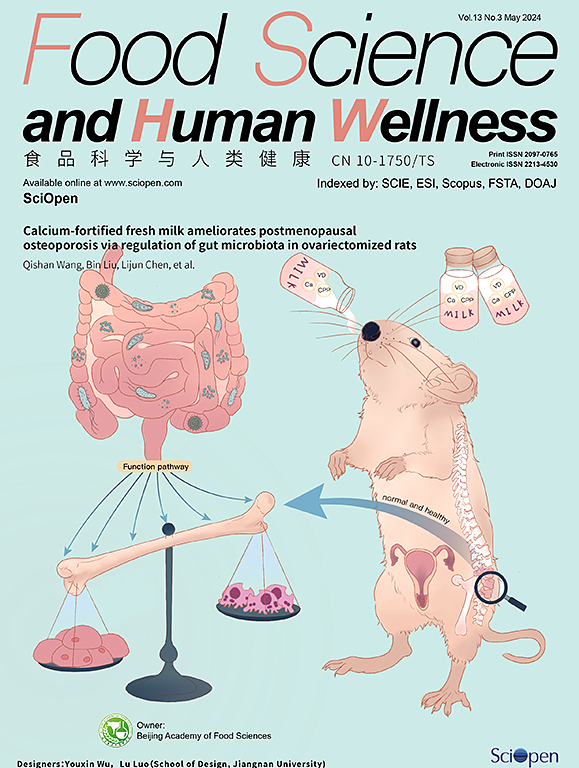Co-inoculation of Debaryomyces hansenii and lactic acid bacteria: a strategy to improve the taste and odour profiles of dry sausages
IF 7.4
1区 农林科学
Q1 FOOD SCIENCE & TECHNOLOGY
引用次数: 0
Abstract
The effects of the co-inoculation of Debaryomyces hansenii separately with 3 lactic acid bacteria (LAB), Lactobacillus sakei, Lactobacillus plantarum and Lactobacillus curvatus, on the taste and odour profiles of dry sausages were investigated. The co-inoculated sausages showed higher free amino acid and organic acid contents than the non-inoculated control and sausages inoculated with D. hansenii alone. Meanwhile, the sausages inoculated with D. hansenii + L. plantarum, D. hansenii + L. sakei and D. hansenii + L. curvatus had the highest contents of aldehydes, esters and alcohols, respectively. The results of electronic tongue, electronic nose and sensory evaluation demonstrated that compared with the sausage inoculated with D. hansenii, the sour taste and floral odour increased and the fatty odour decreased in the sausage inoculated with D. hansenii + L. sakei; this was more favourable for the development of a desirable flavour in sausages. Moreover, the partial least squares regression analysis indicated that 10 taste and 33 odour compounds were mainly responsible for the differences in the flavour profiles among the sausages. Overall, these findings contributed to a more comprehensive understanding of the formation of sensory characteristics in dry sausages co-inoculated with yeast and LAB.
汉森德氏酵母菌和乳酸菌的联合接种:改善干香肠口感和气味的策略
研究了汉斯德巴氏菌与酒井乳杆菌、植物乳杆菌和弯曲乳杆菌3种乳酸菌共接种对干香肠口感和气味的影响。共接种香肠的游离氨基酸和有机酸含量高于未接种对照和单独接种香肠。与此同时,大肠杆菌+植物乳杆菌、大肠杆菌+ sakaki乳杆菌和大肠杆菌+弯曲乳杆菌接种的香肠中醛类、酯类和醇类含量最高。电子舌、电子鼻和感官评价结果表明,与接种了猪肠杆菌的香肠相比,接种了猪肠杆菌的香肠酸味和花香增加,脂肪味减少;这更有利于香肠中理想风味的发展。此外,偏最小二乘回归分析表明,10种味道化合物和33种气味化合物是香肠风味特征差异的主要原因。总的来说,这些发现有助于更全面地了解酵母和乳酸菌共接种干香肠的感官特征的形成。
本文章由计算机程序翻译,如有差异,请以英文原文为准。
求助全文
约1分钟内获得全文
求助全文
来源期刊

Food Science and Human Wellness
Agricultural and Biological Sciences-Food Science
CiteScore
8.30
自引率
5.70%
发文量
80
审稿时长
28 days
期刊介绍:
Food Science and Human Wellness is an international peer-reviewed journal that provides a forum for the dissemination of the latest scientific results in food science, nutriology, immunology and cross-field research. Articles must present information that is novel, has high impact and interest, and is of high scientific quality. By their effort, it has been developed to promote the public awareness on diet, advocate healthy diet, reduce the harm caused by unreasonable dietary habit, and directs healthy food development for food industrial producers.
 求助内容:
求助内容: 应助结果提醒方式:
应助结果提醒方式:


